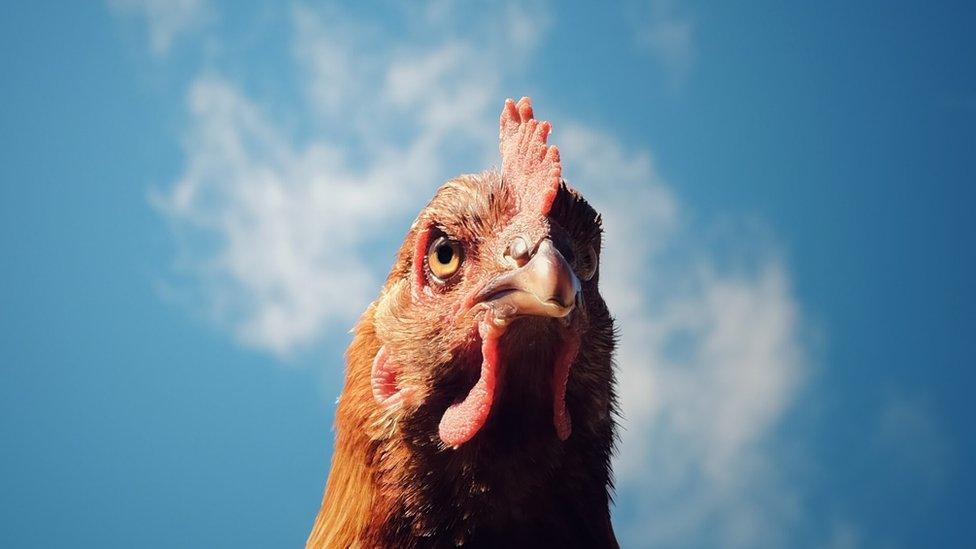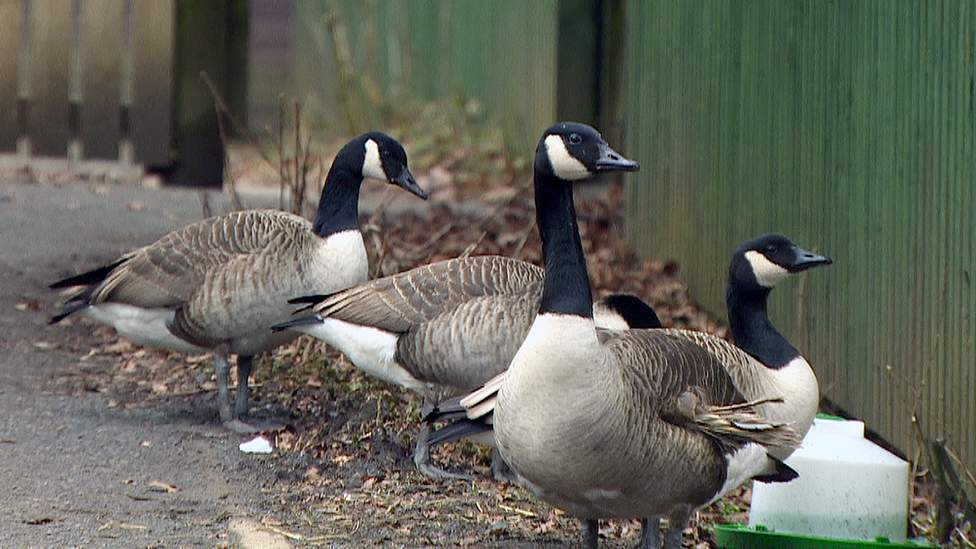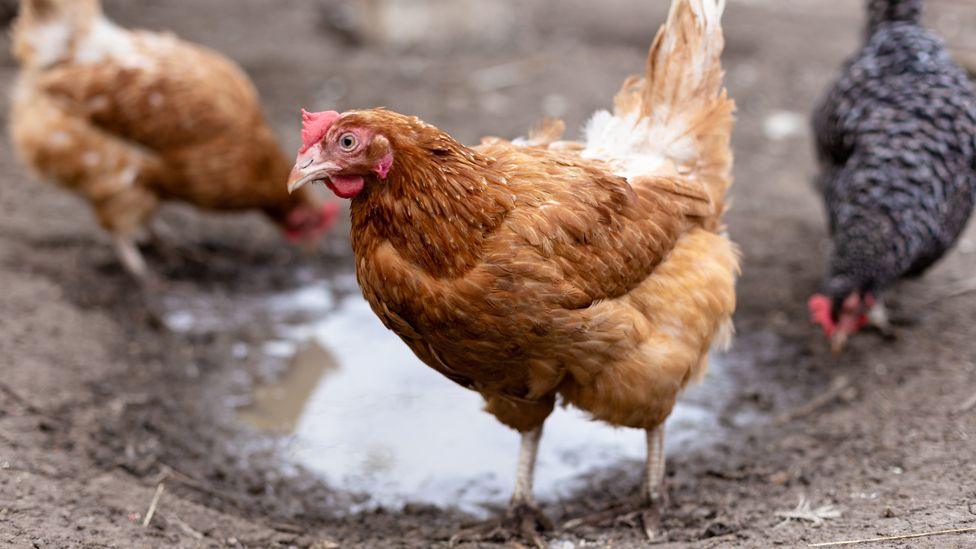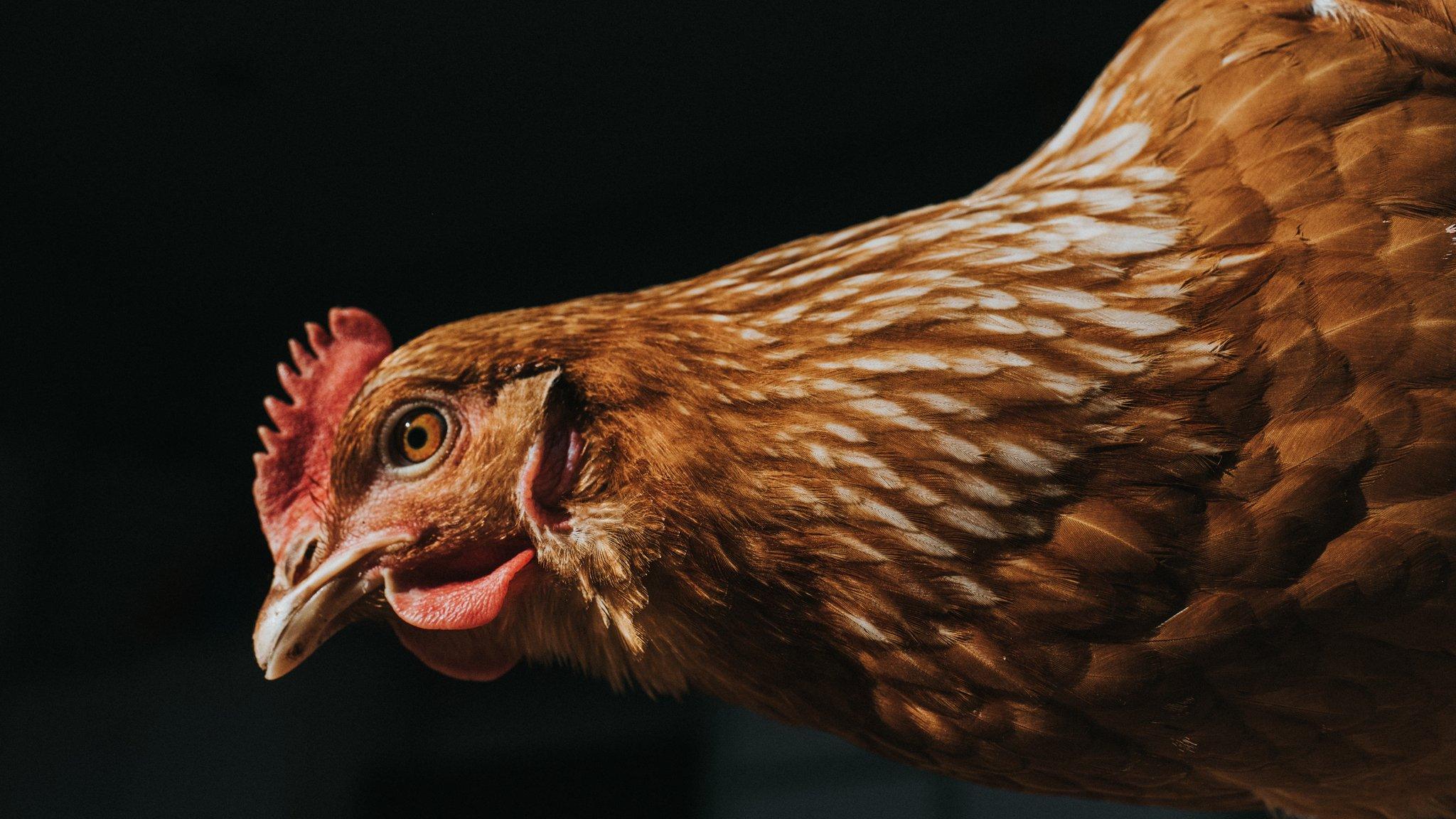Dozens of dead birds in suspected flu outbreak at Highlands reserve
- Published

Consultant ornithologist Peter Stronach came across dead wild birds at Loch Fleet in Sutherland
Dozens of wild birds have died in a suspected avian flu outbreak at a national nature reserve.
Consultant ornithologist Peter Stronach found 160 individual birds of 20 species at Loch Fleet, near Golspie in Sutherland this week.
Scotland's chief vet Sheila Voas said there had been a significant number of wild bird deaths in the area in recent weeks.
She said 50% of birds tested by the authorities were positive for the flu.
Ms Voas said some results returned so far on birds tested this week were also positive.
Public agency NatureScot, which manages Scotland's national nature reserves, said a number of cases of avian flu had been confirmed in birds around the coast in recent weeks.
It said suspected cases had been reported at its coastal nature reserves in the north Highlands, Northern Isles and the north east. Potential cases had also been reported at Loch Leven in Perth and Kinross.
Avian flu can be spread from wild birds, usually migratory species such as geese, to domestic birds.
The Scottish government said the recent winter had seen the largest outbreak of avian flu in the UK to date.
It said more than 100 commercial and domestic poultry flocks were affected.
'Risk dropped'
In Scotland, there were cases reported in Dumfries and Galloway, Aberdeenshire and Ayrshire.
Ms Voas said avian flu was usually a problem in winter months, adding that it was disappointing but not unexpected to see cases later in the year.
The risk is reduced by migratory birds returning to their Arctic breeding grounds, along with drier weather and higher levels of UV from the sun which helps to kill off the viruses that cause the disease.

Domestic poultry can be infected by bird flu
Ms Voas said: "The risk has dropped - it has gone down from medium to low.
"I'd imagine poultry keepers will be concerned, but the position is getting better despite these latest findings."
Highland Council said its environmental health team was aware of the issues at Loch Fleet and was liaising with the Animal and Plant Health Agency and the landowner.
Mr Stronach came across the dead birds while on a walk at the coastal reserve, which is internationally important for its wildlife.
He initially counted 72, before returning to make a complete circuit of the coastal reserve and found more dead birds.
They included pink-footed geese, shelducks, carrion crows and fulmars.
He said: "To see that number of birds is very, very unusual."
'Flying in circles'
Mr Stronach said avian flu viruses were known to be carried by pink-footed geese. He also said the behaviour of surviving birds he spotted also pointed to it being flu.
He said: "The eiders I had seen still alive were flying around in circles and being dizzy, which are symptoms that have been seen in other species."
The Scottish government said public health advice was that the risk to the general public from bird flu was "very low".
A spokesman said: "However, the risk to people with intensive exposure to infected birds is considered to be low.
"Food standards bodies advise that avian influenzas pose a very low food safety risk for UK consumers, and it does not affect the consumption of poultry products including eggs."
Avian flu viruses can spread naturally among some wild birds, such as geese, and can infect domestic poultry and other bird and animal species.
- Published20 March 2022

- Published11 March 2022

- Published20 January 2022
